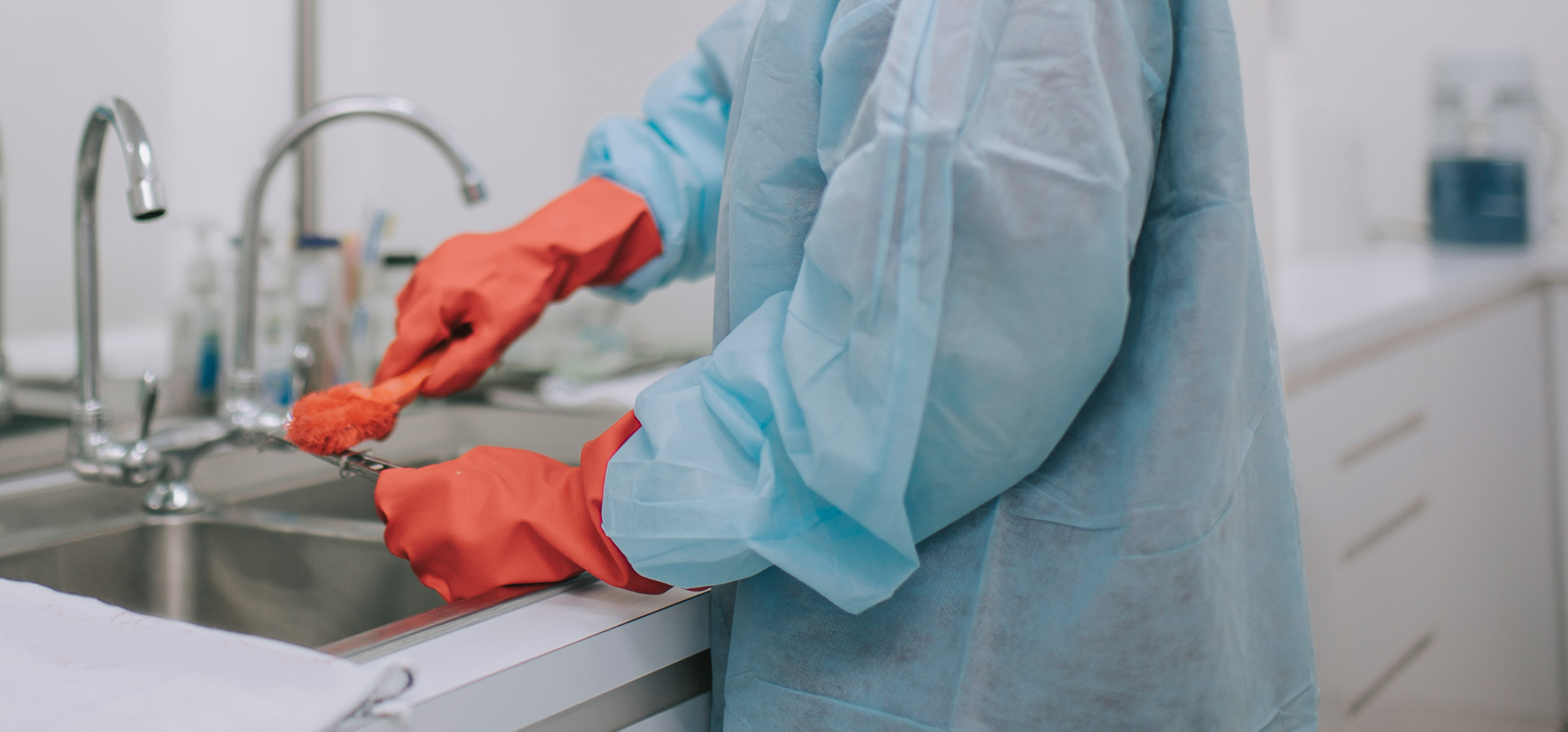
The splash zone produced during the manual cleaning of medical devices drenches technicians at the sink from head to toe and sends droplets traveling several feet throughout the reprocessing environment, requiring better precautions.
That’s according to new research from Cori L. Ofstead and others in a study recently published in The American Journal of Infection Control.
“Engineering controls and better PPE are needed to reduce personal exposure and risks associated with the potential dispersal of contaminated fluids throughout the facility,” they write.
Transporting wet endoscopes was found to disperse droplets on a 15-foot path from the sink to the automated endoscope reprocessor, and shoe covers tracked fluid throughout the unit, the authors write.
Personal protective equipment did not fully prevent fluid exposure, this and other research has shown.
Ofstead, an epidemiologist with 25 years of research experience, has extensively studied contamination issues related to endoscopes. She also has conducted research related to splashes during reprocessing.
Sterile processors routinely decontaminate devices that are soiled with blood, tissue and secretions. That contamination, however, can spread throughout reprocessing areas and potentially expose staff and “patient-ready” devices, especially when there is not adequate separation between dirty and clean areas, the researchers write.
This study was designed to identify the activities that generate splash and to determine how far the droplets travel during manual cleaning. It also examined the impact of cleaning processes on splash generation and evaluated the effectiveness of personal protective equipment (PPE) at protecting technicians and visitors in the decontamination unit.
In this study, splashes were generated and droplets were dispersed during the manual cleaning of a colonoscope and an ultrasound probe, according to the authors.
Among the possible solutions to extensive splashing are lowering the water pressure or installing tubing on faucets that could direct the flow of water, or creating ergonomic workstations and sink designs to reduce bacteria aerosolization when running faucets.
The authors recommend that more research be done on the clinical implications of droplet dispersal in the processing unit and that it covers risk of exposure to biological and chemical hazards.
“Innovative solutions for splash reduction should prioritize worker health and patient safety and involve stakeholders including guideline-issuing bodies, vendors, infection preventionists, sterile processing managers, and frontline technicians,” the authors write.


